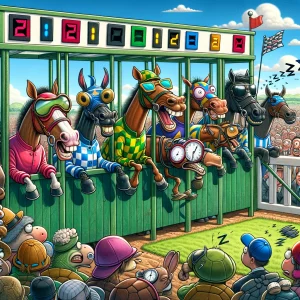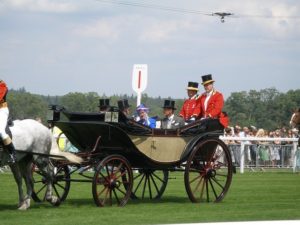Why don’t fillies run in the Derby?
The Derby, or the Derby Stakes, to give the race its full title, is run over a left-handed, undulating mile and a half at Epsom Downs in Surrey, South East England on the first Saturday in June. The race is open to three-year-old colts and fillies, with the latter receiving a 3lb weight allowance from their male counterparts. Despite that significant advantage, which effectively equates to a two-length ‘head start’ over the Derby distance, modern trainers are loath to pitch their fillies in against the colts.
Historically, six fillies have won the Derby, but none has done so since 1916 and none has even attempted to do so since Cape Verdi finished unplaced, as favourite, in 1998. Of course, colts are, on the whole, physically bigger and stronger than fillies, such that it takes an exceptional middle-distance filly to beat male opposition on the track, especially at the highest level. Fillies also have the option of running in their own Classic, the Oaks, which is run over the same course and distance as the Derby on the previous day. The Oaks is restricted exclusively to fillies, who compete at level weights and, despite offering far less guaranteed prize money than the Derby – £548,450 compared with £1,561,950 in 2023 – is evidently the preferred option for contemporary trainers.
Of course, in the racing industry, prize money is not the be-all and end-all, especially for powerhouse breeding operations, such as Coolmore, Godolphin and Juddmonte. A Derby-winning broodmare is all very well, but a Derby-winning stallion – who can cover hundreds of mares a year, as opposed to producing just a single foal – is an altogether different proposition, economically. The last Derby winner to be retired to stud, Masar, who is from the family of Sea The Stars, stands at the Dalham Hall Stud in Newmarket for a relatively modest £14,000 per offspring, but Sea The Stars himself stands at Gilltown Stud in Kilcullen, Co. Kildare for an eye-watering €180,000 a time.
 Horse racing can be a serious affair for jockeys, trainers, owners and indeed I expect the horse. And that’s before to get to the punters and those cheering them on. So let’s have a light hearted moment and inject some humour into the sport of kings. Whether good jokes, or bad, it can bring a smile, and so let’s start with a few one liners:
Horse racing can be a serious affair for jockeys, trainers, owners and indeed I expect the horse. And that’s before to get to the punters and those cheering them on. So let’s have a light hearted moment and inject some humour into the sport of kings. Whether good jokes, or bad, it can bring a smile, and so let’s start with a few one liners: Ascot Racecourse is, of course, situated in the Royal County of Berkshire, South East England, which is, in fact, the only English county to warrant the ‘Royal’ epithet. Berkshire has been closely associated with the British monarchy for nearly a millenium, not least because of the presence of Windsor Castle, originally constructed by William I, a.k.a. ‘William the Conqueror, in the late eleventh century and a royal residence pretty much ever since.
Ascot Racecourse is, of course, situated in the Royal County of Berkshire, South East England, which is, in fact, the only English county to warrant the ‘Royal’ epithet. Berkshire has been closely associated with the British monarchy for nearly a millenium, not least because of the presence of Windsor Castle, originally constructed by William I, a.k.a. ‘William the Conqueror, in the late eleventh century and a royal residence pretty much ever since. Back in the day, I remember saying I would never watch YouTube.
Back in the day, I remember saying I would never watch YouTube.